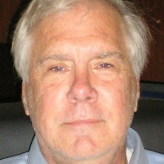I wanted to test myself to see if I could write an example of how to explain something rather complex in just a few words (e.g. 1000 words), such that a layman could understand the basics. I tried to do this by describing the nuclear physics behind how a nuclear reactor worked on a nuclear submarine. Here is how I did that.
-------
A nuclear fission takes place when a “slow neutron” hits a uranium atom. A slow neutron is a neutron that travels along with an energy of 25 electron volts (or something like that). When a fission occurs, the uranium atom splits into two, creating two different elements such as Iodine or Cobalt, etc. It is from these bi-products from fission that radioactivity is given off in terms of gamma, alpha rays, etc. In addition, when a fission occurs, on average 2.07 neutrons with energy levels of 2 Mev (Million electron volts) are created.
Now here is the rub. What you want to do is to operate the reactor at its “critical point”. The critical point is when 1.07 of the 2.07 fission neutrons are either lost or absorbed by using “neutron poisons” or protective shielding such as Lead. The critical point also means that 1 of the 2.07 Mev neutrons is slowed down in such a way that it gets down to an energy level of 25 ev so it can create another fission.
So, how is this done? Water is passed through the reactor where the fissions are taking place. Water works like a moderator, such that neutrons bounce around the water molecules converting the neutron’s kinetic energy into thermal energy in the water. When a neutron hits a water molecule it heats up the water molecule, and the neutron itself loses some of its kinetic energy. This process is managed such than for every 2.07 neutrons created from a fission only one returns at a 25 ev energy level to create a new fission.
The water in the reactor system that I have just described is called the “primary coolant” and runs through a closed system called the “primary coolant system”. On top of the primary coolant system is a Pressurizer (like a water tower). The water in the pressurizer is heated to 606 degrees where water boils at a pressure of 1600 psi. This 1600 psi pressure is applied to the primary coolant system so the 480 degree water that passes through the reactor does not boil.
The pipes of the primary coolant system run through a steam generator which is constantly filled with another water system, called the “secondary water system”. The water from the primary coolant system heats the water in the secondary coolant system and the steam that is generated from this heat transfer is used to drive turbine engines to create energy or for main engines to drive something like a submarine.
The primary water leaving the steam generator is cooler than it was when it entered the steam generator, then using primary pumps the water is pushed back through the reactor where it gets reheated again as it passes through the reactor to get energy from a new set of fission neutrons.
The steam that is generated from the steam generator once it passes through the turbine machines is condensed so it can be sent back to the steam generator to be heated again by the primary coolant. On a nuclear submarine we used cold sea water in our condensers to cool the steam and convert it to secondary water again. The primary and secondary water systems were both what you called “closed systems”. That meant that none of the water’s actually touched each other (primary, secondary, or seawater), instead heat conversion took place through a totally enclosed piping system.
Now this is not necessary to know, but it is something I think you should find interesting. Power is increased, not by raising or lowering the nuclear control roads, but instead by opening and closing the steam valves. Now here is how that works.
As the steam valves are opened the pressure in the steam generator drops, lowering the boiling point of the water in the secondary system. This cools the water in the primary system more so the temperature of primary water is lower than it was before the steam valves were opened. The cooler molecules means they are more tightly crunched together meaning that more neutrons are slowed and more fictions occur. The heat of the primary water is increased, which means the primary water molecules expand and more neutrons leave the scene without causing another fission. The combination of the colder water coming into the reactor and the hotter water leaving the reactor cancels the moderating factor out.
This nuclear and moderating factor essentially determines power. If you had the steam generators set up for full power, the differential temperature between the inlet and outlet of the reactor was something like 20 degrees. 470 degrees on the inlet and 490 degrees on the outlet. At lower steam demands, that water differential was more like 4 degrees—478 degrees on the inlet and 482 degrees on the outlet.
So that is it. To reach criticality (one thermal neutron for every fission) you raise the control rods up to a point where the water physics that I described above takes hold. Once power got to this point, then addition Power was not increased by raising the nuclear control rods further, but instead by simply opening and closing steam demand, letting the water and pumps do their trick.
And that is an explanation of something seeming complex made simple in less than 1000 words. One could do somewhat the same thing if they wanted to explain the complexity of “balancing the budget”, “health care”, “defense spending”, etc. etc. etc. Nothing is too complex that it cannot be broken down with a limited set of words. It’s just a matter of how you structure those words.



